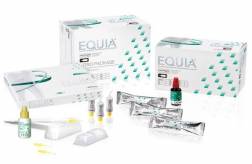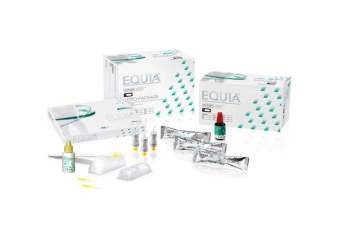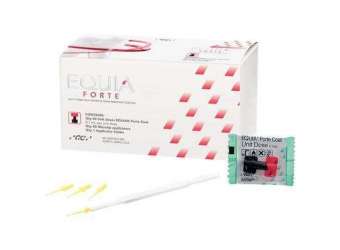-
 Compomer Equia Forte - GC by GC America
Compomer Equia Forte - GC by GC America
A type of dental material used for restorative purposes. It is a combination of two dental materials: composite resin and glass ionomer cement. Hence, the name "compomer" is derived from the words "composite" and "ionomer."
Compomers are often used as dental fillings for small to medium-sized cavities, particularly in areas where the teeth undergo moderate chewing pressure. They offer some of the benefits of both composite resins and glass ionomer cements.
The main characteristics of compomers include:
Aesthetic appearance: Compomers can be color-matched to the natural shade of the patient's teeth, making them blend in with the surrounding tooth structure.
Fluoride release: Like glass ionomer cements, compomers release fluoride over time, which can help in preventing tooth decay and strengthening the adjacent tooth structure.
Wear resistance: Compomers have reasonable wear resistance, making them suitable for use in areas with moderate chewing forces.
Adhesive properties: Compomers can bond to the tooth structure, providing a good seal and reducing the risk of further decay or microleakage.
However, compomers also have some limitations. They are not as durable or long-lasting as pure composite resins and may not be suitable for use in high-stress areas of the mouth. Dentists typically consider factors such as the size and location of the cavity, the patient's oral habits, and the aesthetic requirements when deciding whether to use a compomer or other restorative materials.
1 - 19 of 19 results



